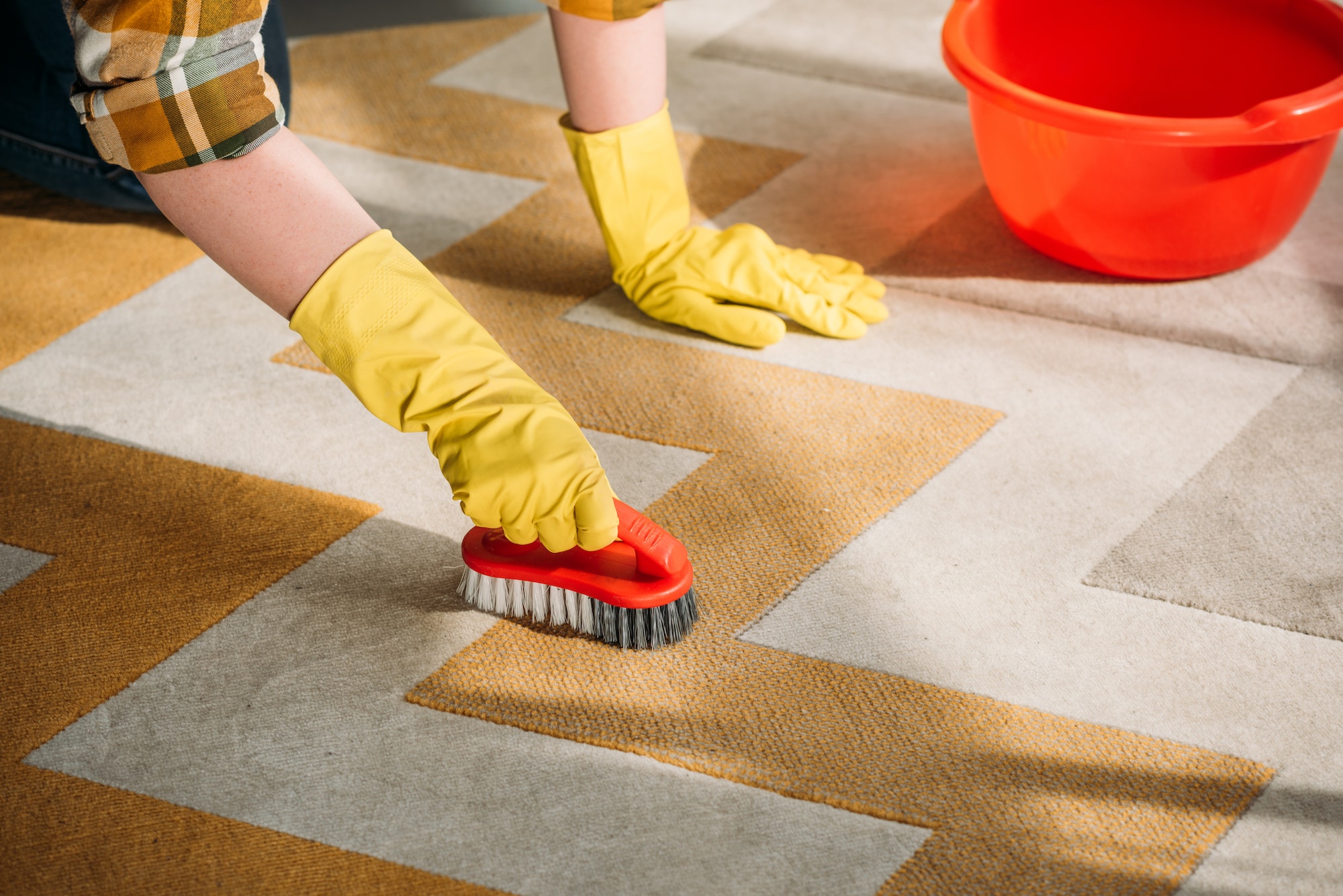Carpets are more than simply floor coverings; they’re soft, warm, and inviting features that turn rooms into pleasant havens. Conversely, rugs gather dirt, stains, and scents over time, dulling their appearance and affecting indoor air quality. Carpet cleaner chemicals come to the rescue in this situation, providing a powerful remedy to rejuvenate and restore carpets to their former splendor. We’ll go into the world of carpet cleaner chemicals in this detailed guide, looking at their different types, constituents, benefits, and safety concerns.
Types Of Carpet Cleaner Chemicals
A range of carpet cleaner chemicals are available, each designed to suit specific cleaning demands. Let’s look at the various sorts of carpet more sanitary chemicals and their distinct properties:
Spot Cleaners
Designers create spot cleaners to address particular stains or spills on carpets. They come in convenient spray bottles containing enzymes or solvents that effectively break down and lift stains.
Steam Cleaning Solutions
Steam cleaners deep clean carpets by using hot water and steam. The cleaning solutions utilized in steam cleaners often consist of a blend of detergents, surfactants, and water softeners. This combination assists in effectively eliminating dirt and grime.
Foam Cleaners
Foam cleaners are appropriate for sensitive carpets or places with limited moisture tolerance. They produce foam surrounding dirt and stains, making them easy to remove once the foam has dried.
Powder Cleaners
Powder cleansers are dry ingredients sprinkled onto the carpet’s surface. They attract and absorb dirt, allowing you to vacuum it after the powder settles.
Pre-Spray Solution
You can use these solutions before thorough cleaning. They aid in breaking tough debris and oils, making subsequent cleaning more effective.
Ingredients In Carpet Cleaner Chemicals
Various substances come together in carpet cleaner chemicals to collaboratively eliminate dirt, stains, and odors from carpets. These ingredients differ depending on the type of cleaner and the intended purpose. The following are some common compounds found in rug cleaner chemicals, as well as their functions:
Detergents: Detergents’ surfactants reduce water’s surface tension, allowing the cleaner to penetrate carpet fibers and extract dirt and stains.
Enzymes: Enzymes aid in eradicating odors and stains by breaking down organic stuff such as food, urine, and pet stains.
Solvents: Solvents dissolve oily and greasy stains that are difficult to remove with water. You can see these in spot cleaners.
Surfactants: Surfactants aid in suspending dirt and grime, enabling them to be easily rinsed away. They’re necessary for a variety of carpet cleaner chemicals.
Oxygen Bleaches: These gentle bleaching solutions improve the color of the carpet by removing stains and discolorations.
Citrus Extracts: Natural citrus extracts have a pleasant scent and work as a natural degreaser and stain remover.
Benefits Of Using Carpet Cleaner Chemicals
Here are some of the primary advantages of using carpet cleaner chemicals:
Enhanced Appearance
Carpet cleaner chemicals can restore fading and unclean carpets’ vivid colors and appearance.
Stain Removal
You can successfully remove stains from spills, pet mishaps, and foot traffic, extending the carpet’s life.
Odor Elimination
Enzyme-based cleaners eliminate odors at their source, leaving carpets smelling fresh and clean.
Improved Indoor Air Quality
Regular cleaning with proper chemicals aids in the reduction of allergies, dust mites, and other pollutants that can impair indoor air quality.
Prolonged Carpet Lifespan
Deep cleaning with the correct chemicals reduces dirt and grime buildup, which can cause fiber damage over time.
Health Benefits
Cleaner carpets help create a better interior atmosphere, which is especially important for people with allergies or respiratory disorders.
Safety Considerations
It is critical to emphasize safety while using carpet cleaner chemicals to ensure effective cleaning and the safety of yourself, your family, and your pets. Here are some crucial safety points to remember:
Read And Follow The Instructions
Always carefully read and follow the product label’s instructions. Each carpet cleaner chemical may have instructions for use, dilution, application, and safety considerations.
Use In A Well-Ventilated Area
When using carpet cleaner chemicals, make sure the area is well-ventilated. Create openings in windows and doors to enable fresh air flow, minimizing the intake of toxic fumes and unwanted smells.
Protective Gear
Consider wearing adequate protection gear depending on the sort of cleaner you’re using. Gloves can shield your skin from discomfort or chemical exposure. Eye protection, such as safety goggles, can help keep inadvertent splashes out of your eyes.
Test In An Inconspicuous Area
Test the cleaner in a discreet, small section of the carpet before using it on the entire area. This step is essential to confirm no adverse outcomes like staining or harm to the carpet fibers.
Keep Pets And Children Away
Keep pets and children away from the treated area during the application and drying. It avoids accidental consumption or contact with the cleaning solution.
Environmentally Friendly Options
As environmental awareness rises, many people seek ecologically friendly carpet cleaner choices that are effective at cleaning while minimizing their environmental impact. Consider the following environmentally beneficial alternatives:
Plant-Based Formulas
Look for carpet cleaner chemicals that contain plant-based compounds generated from renewable sources. Compared to standard chemical formulations, these formulas are often biodegradable and have a lower environmental impact.
Biodegradable Ingredients
Look for items that contain biodegradable ingredients that degrade naturally over time, decreasing landfill waste and pollution.
Low VOC Content
Volatile Organic Compounds (VOCs) can pollute indoor air and pose health dangers. Choose carpet cleaner chemicals with minimal or no VOC content to improve indoor air quality.
Certifications
Third-party certifications, such as the Green Seal or the EPA’s Safer Choice label, should be considered. These certificates demonstrate that the product complies with particular environmental and safety requirements.
Concentrated Formulas
Concentrated carpet cleaner formulas can help reduce packaging waste and transportation impacts. They frequently require dilution before use, allowing you to tailor the cleaning solution’s strength to your requirements.
Wrapping Up
Carpet cleaner chemicals are critical for preserving our interior environments’ beauty and health. There is a product suitable for every type of carpet and cleaning need, with a vast range of options accessible, from spot cleaners to steam cleaning treatments. You can make informed decisions and keep your carpets looking and feeling their best for years to come if you understand the many types of carpet cleaner chemicals, their ingredients, benefits, and safety issues. Remember that a well-kept carpet improves the looks of the space and helps create a cleaner and healthier living environment.
Discover more from Futurist Architecture
Subscribe to get the latest posts sent to your email.



![modern apartment [article_title]](https://www.futuristarchitecture.com/wp-content/uploads/2025/03/8-Carnival-Ready-Tricks-to-Roll-Your-Bar-Cart-Into-a-900x600.jpg)